The Tamizh Open Architecture
Tamilnadu is the land of dharma, Vedas, Vedanta, and Bhakti. Tamizh culture (Kalacharam) is a glorious example of dharma’s open architecture [1] and therefore the Tamizh identity is inclusive. It cuts across religion, jatis, class, and geography. Many thousands around the world identify themselves as Tamizh. Since ancient times, many from outside Tamilnadu have sought shelter inside, and many from outside have come in and also enriched its culture. Tamizh is not just a spoken language and text but an entire culture. Tamizhs are large hearted and only reject those individuals whose own worldview demands and injects the virus of exclusivity. In this Tamizh framework, no individual or jati or community or religion can claim or exercise a monopoly over Truth.
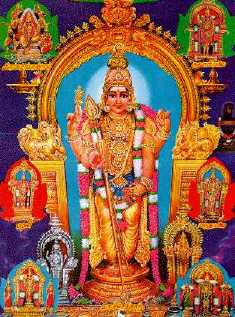
Devotees of Murugan or Amman and other manifestations of the divine in the diverse Hindu traditions do not seek to impose their belief system on others.

This includes the followers of Indic systems such as Jainism or Buddhism which have also coexisted since the Sangam era, as well as those who embraced newer belief systems that originated outside India such as Christianity or Islam or Judaism. In such an open architecture, diversity thrives and unity is established based on mutual respect [3]. Dr. Abdul Kalam is an illustrious example of a practitioner of Tamizh Kalacharam whose interactions with others was based on mutual respect. The Tamizhs perform Pooja to a multitude of Devis and Devatas and are happy to accommodate two more, with none claiming and imposing superiority over everyone else. This has been the Tamizh and Indian way for thousands of years.
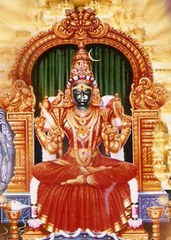
India is a civilizational state and is perhaps the only civilization that has continually endured since the most ancient of times. Why? There are many reasons, and here is one: Every nation and civilization has to go through a series of crises and upheavals. Each of these challenges demands sustainable solutions. A monoculture can only produce one solution approach that tends to be all-or-nothing and eventually loses out. Indic diversity continually produces many living Gurus, Rishis, and masters whose bold, varied, and novel decentralized solutions rooted in dharma eventually prevail. Hence, this dharmic form of inclusivity and diversity must be preserved for Tamilnadu’s and India’s long-term stability.
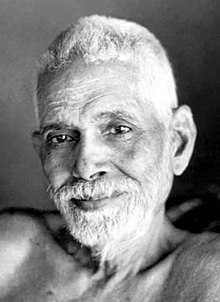
However, this inclusivity is being blatantly misused by a few religious zealots who adopt a history-centric version of Christianity, one of the fastest growing religions in Tamilnadu. To better understand this very important threat, we review a graduate school thesis submitted by a Tamizh Christian convert to a US university [5], advising his western thesis advisors on the best options to convert devout Hindus to their brand of history-centric Christianity. This thesis specifically focuses on how to get Tamils to lower their defenses against conversions in Tamilnadu (“to develop a meaningful form of spirituality which will minimize Hindu opposition to Christian discipleship“). Therefore, it makes sense to limit our discussion to TN noting that if this TN pilot-project succeeds, it will be applied after region-appropriate modifications, to all of India. In this series, we attempt to understand this history-centric Christian view of Tamil Nadu, and the methods being adopted to subvert Tamilnadu’s open architecture. In this introductory post, we provide a high-level summary of this ongoing battle for Tamilnadu.
History-centric Christianity
The term History-centrism was coined in the book ‘Being Different‘ [2] and is fundamentally different from the Embodied Knowing traditions of dharma in Tamilnadu and India.
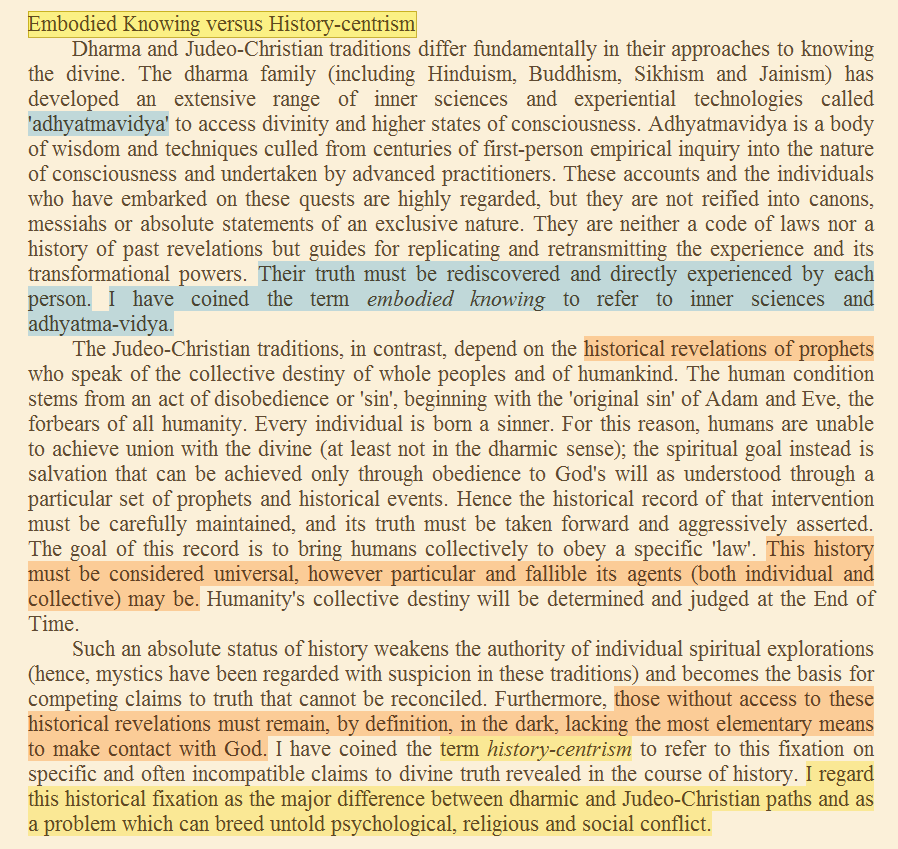
This brief two-paragraph description from the book is central to understanding the threat posed to Tamilnadu by this Orthodox or Scriptural or History-Centric Christianity (HCC).
HCC is founded on an unconditional, unquestionable, absolute, literal belief in the Nicene Creed.
Unless we can fully grasp the full meaning of history-centrism, we will be unable to properly and completely characterize the threat; and without clearly identifying the threat, no counter-response can be developed.
What is inside this Nicene Creed that is the central tenet of this extreme version of Christianity? Tamizhs belonging to all religions and Jatis need to understand this as well. The beliefs are quite simple to read and memorize. We again turn to ‘Being Different’ for a summary of the ancient Nicene Creed that was adopted in 325 CE by the first council of Nicaea. This remains the only set of beliefs that is accepted by all major denominations of the Christian faith, including those in Tamilnadu.
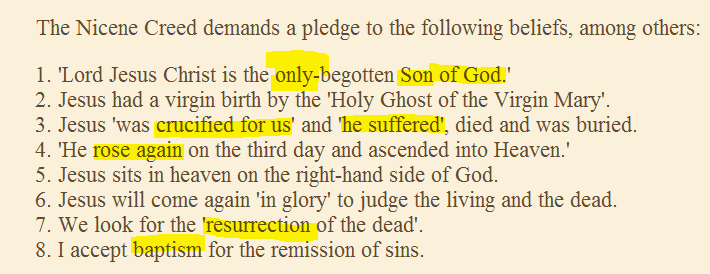
The Nicene Creed was translated into Tamizh by the Catholic Missionary Francis Xavier in the 1540s and used to convert tens of thousands of the Parava fisherman community. He is quoted as having baptized ten thousand Hindus in just one month [5]. Any moderate Tamizh Christian would focus on emulating the positive qualities attributed to Jesus and not interpret this literally as incontrovertible historical truth, but for the fundamentalist, this belief is absolute and those who do not accept this (including moderate Christians) are treated as hostiles. To quote from the thesis, “the bible is God’s revelation and Jesus Christ is the only way to God” and the aim is to “communicate only Jesus Christ and his Gospel to the Hindus”.
Why is HCC attractive to some converts?
An intriguing question arises when we read the thesis. Why would a Tamizh who is knowledgeable about Vedanta, Bhakti, and other pluralistic traditions of dharma that were nurtured in Tamil Nadu for more than a thousand years, embrace such an extreme Christianity? Why would they prefer this submission to a foreign authority over their own native sophisticated adhyatmic practices that have been available to everybody? Let us examine this question from the thesis author’s perspective.
Indian Rishis, Acharyas, and Gurus may have spent thousands of years searching for the Truth. The Vedas acknowledge the uncertainty about the nature of ultimate reality. But to a believer, the Nicene Creed provides historical evidence of Jesus as the first and only son of God who embodied the absolute and complete truth. While darshanas and Vedanta schools provide intellectual debates and philosophical explanations and techniques to discover the truth for oneself, the HCC truth claim in the Nicene creed provides certainty and proof to its believers – conclusive flesh-and-blood evidence of the Truth. As the thesis [5] claims “In Christianity, God is the only God who revealed Himself in the historical events of the world. However, in devotional theism, he is only a philosophical concept or a mythological figure“. The absolute and divine truth manifested itself once and exactly once on this earth in history exclusively in the form of Jesus Christ. There is no place for doubting Thomases. One can therefore dispense with the uncertainty of the real world, rational explanations, philosophy, spirituality, or intellectual debates about alternative perspectives.
The Nicene Creed Jesus as the sole living embodiment of truth is the answer to all questions. In the mind of such a believer, this makes HCC superior to all other traditions. Of course, this requires an immediate and complete rejection of any thought system or data that conflicts with HCC and therein lie the seeds of violence in a literal interpretation of the Nicene Creed. The Divine justification to enforce the Nicene Creed all over the world is done by suitably interpreting the Great Commission.
The Great Commission
On an individual level, History-centric Christianity is not an issue if we operate under the principle of mutual respect. For example, it is perfectly fine if a Christian chooses to take the exclusivity and historical claims inherent in the Nicene Creed dogma literally for his or her own personal religion, while also fully and permanently respecting the equal validity of alternative belief systems for others that reject this dogma. This is the Tamizh way since ancient times. Unfortunately, this is not the case with HCC whose interpretation of the ‘Great Commission’ brings it in direct conflict with other thought systems. The Nicene Creed serves to boost the collective ego of followers. Even the possibility of any other divine manifestation before or after Christ, which can supersede the Nicene Creed is summarily dismissed. Its implications for Tamil Nadu are serious, on par with Wahhabism in Islam that is wreaking havoc, except that the violence and destruction in this battle is below the surface. The Great Commission (GC) has been used as a convenient scriptural sanction for ‘discipling’ Hindus who worship ‘false gods’.
The Great Commission carries the instructions of a resurrected Jesus to his apostles to spread his teachings to all parts of the world. There appear to be many versions, but the key version used by History-centric evangelists is the one in Matthew 28:16-20 [8], where the instructions are given to followers to baptize all people around the world in the name of the Father, Son and Holy Spirit [5].
Strength and Weakness of HCC
The Great Commission is interpreted recursively by extremist Christians and evangelists to convert Hindus in India today, i.e., the GC is not just limited to the original disciples of Jesus, but to all the disciples of the disciples as well, and is thus a perpetually active instruction until kingdom come. If total submission to the Nicene Creed is the desired end state of a Tamizh Hindu convert, then the fundamentalist interpretation of the Great Commission provides the necessary scriptural sanction and justification to achieve this tragic end. In tandem, these two ideas have been useful in massively increasing the membership count and global market-share of Christianity, and spreading the power of the various churches across the globe. A subscription to the Nicene Creed brings you all the collective benefits of being an official member of a globally organized, rich, and powerful religious organization whose headquarters reside in the west.
On the other hand, when its impact on an individual is evaluated on its own merit, HCC suffers from serious deficiencies and has a dismal track record when it comes to problem-solving, which requires deeper scrutiny. Clearly, it contains no sustainable solutions to the psychological problems and lifestyle challenges that afflict individuals today. It is incompatible with Yoga and meditation practices of India that is bringing so much of happiness and spiritual tranquility to millions around the world. It lacks (and does not need) the adhyatmic (spiritual) aspect as well and does not focus on self-realization. The variety of festivals, the colors, the sounds, the sacred chants, the harmony of woman and man and nature, all of which arise from Hindu cosmology are entirely missing. Only events that serve as historical reminders of the Nicene Creed are useful to commemorate. Consequently in Europe and North America, despite several centuries of monopoly, we are witnessing a steady decline in the numbers of HC Christians. An increasing number of disenchanted and disturbed individuals are seeing through the hollowness and futility of this extremist HCC ideology. They are moving toward atheism or moderate Christianity. In both cases, these people have turned to Yoga and meditation techniques that originated in dharma tradition.
The sobering fact is that Nicene-Creed History-Centrism is neither necessary nor sufficient (and is absolutely of no relevance) for any person to reach a higher level of consciousness and self-realization.
How does this orthodox Christianity resolve this problem? There are two ways to do this – the honest way and the dishonest way. The honest solution is a dharmic resolution, which we discuss first.
Jesus as one of many Avatars or Gurus
Many moderate Christians in India have consciously or subconsciously adopted this approach, either completely returning to their dharmic Tamizh roots, or embracing an Indic version of Jesus that rejects the exclusivity and historicity of the Nicene Creed dogma. In the latter case, a devotee worships Jesus or Mary or any other deity as their own Ishta Devata while fully respecting and acccepting the traditional deities of Tamizhs, their village and sea deities, and their family deities, as equally valid. Here, Jesus is considered (by those who believe) as one of the many avatars or gurus or great thinkers without asserting superiority and therefore, there is no need to convert others to follow the “one true God”. Diversity is preserved. Importantly, this message is passed to following generations so that their children do not fall prey to churches and padres that preach extreme Christianity.
The great commission is not interpreted as a perpetual appeal to convert, but as a encouragement to emulate noble ideas. In such an interpretation, HCC+GC is not a militaristic vehicle to assert and enhance a collective identity and destroy other faiths. A person who achieves great progress in this dharmic path of self-realization has the potential to become a living Guru and emulate all the (non-mythical) achievements attributed to Jesus. Among the multitude of manifestations of the divine in India, one more is easily accommodated, as noted Tamizh thinker and commentator S Gurumurthy has pointed out many times.
Such a solution preserves mutual respect and a live and let-live attitude. However, such a solution is also a threat to the clergy and history-centric churches since it eliminates the middlemen. Therefore, these vested interests denounce such an amicable approach as ‘unchristian’ and instead promote an alternative predatory approach that preserves their existing power structure. However, the historicity of the Nicene Creed is tied to Europe and Middle East and is completely alien to Tamizh and Indian culture. To execute GC in India requires an adaption of the GC that is suitable to the Indian context. This is achieved through a practical technique that Christian theologians in the 1950s called contextualization [5].
Four-step Process of Contextualization
The thesis quotes the following definition of contextualization: “the translation of the unchanging content of the Gospel of the Kingdom into verbal form meaning to the peoples in their separate culture and within their particular existential situations”. The thesis states that contextualization is a “missiological necessity” and that the Bible itself as an example, with the incarnation of Christ as the best example of contextualization. The apostle Paul is considered the person who best contextualized the Nicene Creed, and the thesis cites this remarkable quote about Paul: “he became all things to all people, and he did that to win more people to Christ” [5].
We propose the following top-down four-step process to conveniently summarize the conversion approach for Tamil Nadu that is described in the thesis.
- Nicene Creed specifies the unchanging end goal.
- Great Commission decides the strategy required to achieve this goal.
- Contextualization identifies the model that fulfils the Great Commission and is scalable, dynamic, and best suited for a context (e.g. Hindus in India or Tamil Nadu).
- Digestion refers to the means and methods used to implement a contextual model for converting (‘discipling’) people belonging to one or more communities or Sampradayas.
The first two levels are common to all countries and regions and specifies the high-level goal and strategy. The third level of contextualization is applicable to a specific country, or region such as Tamil Nadu when the country is diverse. The fourth level of digestion implements a contextualization ‘use case’ of how best to harvest Hindu souls belonging to specific ‘castes’ or sampradayas. The achieved harvest numbers versus the targets are tracked and updated on a regular basis and stored in databases. A quick search of the internet can provide examples.
Digestion
Digestion is a term coined by Rajiv Malhotra and is another key concept to grasp. We directly present the explanation from his book ‘Being Different’ [2] along with some highlighted points:
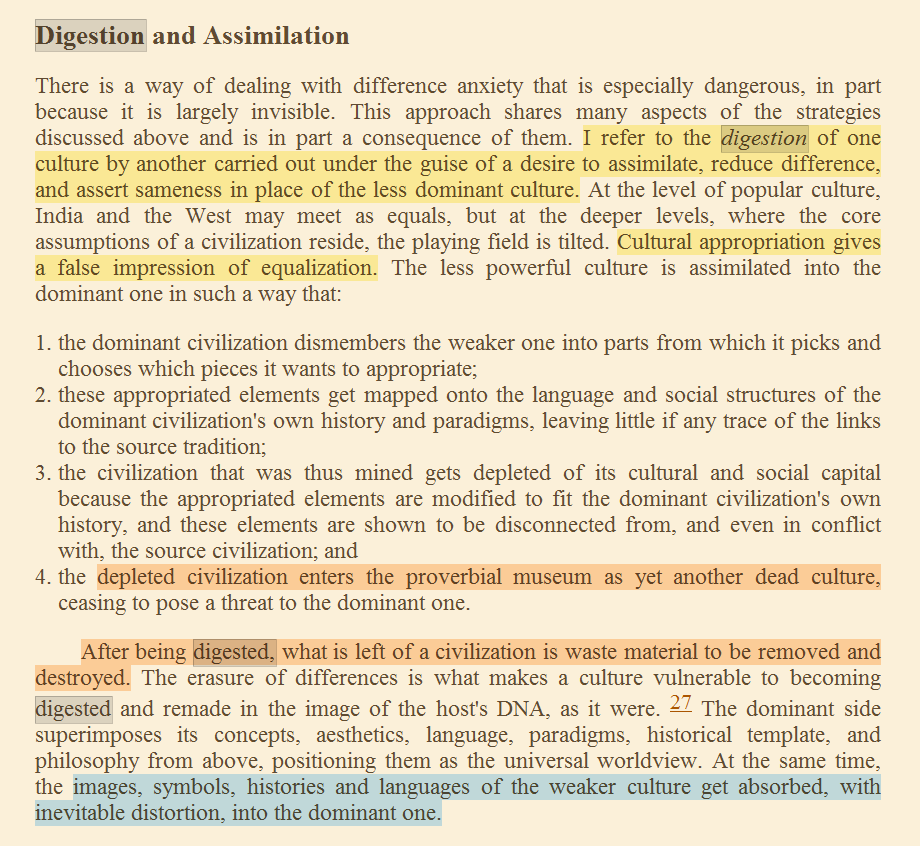
The thesis communicates that the aim is not to reject but to digest Hinduism into HCC quite clearly: “Christ can be communicated not as the destroyer of Hindus, but as the Crown of Hinduism”. Furthermore, one “accepts the biblical truths revealed in the writings of the Hindu saints on the assumption that Christ has revealed His light in the Hindu world in the past and He is also actively present now“. Digestion is not done randomly or in haste, but carefully, in order to minimize the risk of the digester’s own traditions getting changed. It is carried out by smart evangelists with full awareness and clarity about the risk versus reward structure inherent in this delicate process, with the first and last goal of preserving the History-centrism encoded in the Nicene Creed. Therefore, the need for deception is critical. The United Nations is planning to make cultural appropriation illegal.
This four-stage process is set up so that no step is redundant. The third and fourth steps involving contextualization is always designed so that it preserves and propagates history-centrism as enshrined in the Nicene Creed at any cost by following the Great Commission. This is done by missionaries in order to eliminate or at least greatly minimize any chance of “syncretism” or contamination of this “pure” Christianity by the age-old village and sea Gods and Goddesses and traditional deities of Tamil Nadu who are “false gods”. The thesis is very careful about how the mechanics of the digestion process should work. There is no equal place for our native Tamizh deities in HCC. Once digestion is complete, they are to be excreted as waste.
Syncretism damages both dharma traditions and History-centric Christianity whereas Digestion only distorts dharma traditions while strengthening HCC.
The thesis explicitly clarifies that “Contextualization is not syncretism, because syncretism is the amalgamation of various pagan beliefs with God’s truths” and it cannot compromise the Gospel with the heathenism of Tamizhs. The author is clear that “the Hindu text should be used to support the Christian view“.
"Syncretism is an apostasy that is condemned in the Bible".
The extraordinary level of detail to which a Tamizh convert to HCC can go to, in order to preserve the beliefs in the European Nicene Creed, prove his loyalty to his western masters, and reaffirm the irreconcilable difference and superiority of his new found faith over his lower native Tamizh traditions can be seen in this statement: “I have used God with a capital “G” in places where reference is made to a deity of a monotheistic religion; a small “g” is used in places where reference is made to a deity to one of the gods of the Hindu pantheon“. The inherent casteism in the thesis is also stunning. It explains how the mass-conversion of poor and ‘low-caste’ Tamizhs have adversely affected the quality of the Christian faith, and that they were so far unable to convert many ‘upper caste’ Hindus. In fact, the main goal of the thesis is to rectify this situation and bring ‘quality’ to HCC.
Operating within this safety net, the evangelist can safely navigate through any culture in the world and convert families en masse. One can incorporate additional “contextual” layers without disturbing the dogmatic core. The fourth step ensures that the implemented contextualization model is maximally effective in its marketing impact on the target audience.
Contextual layers are created in a culturally appropriate manner in order to simulate the appearance of a dharmic solution.
In short, contextualization and digestion employ deception and the net result is the destruction of indigenous traditions to feed and strengthen the predatory system. Therefore, for contextualization to succeed, a cultural genocide is necessary and if contextualization wins the battle for Tamilnadu, the cultural genocide of Tamizhs is guaranteed.
Breaking India and Beyond
A dogmatic system that simulates an external dharmic layer would necessarily have to appropriate Tamizh traditions and techniques. However, dharma traditions of Tamilnadu and India are incompatible with Nicene Creed dogma or indeed any other Abrahamic dogma, and therefore cannot be directly or openly borrowed. It can only be digested. In other words, the original meaning, intent, objectives are deliberately erased. Note the sheer hypocrisy here. HCC’s own beliefs are deemed unquestionable and absolute. Their own ceremonies that mark history-centrism are deemed meaningful while the customs that have been held sacred by Tamizhs for thousands of years can be mangled, bent, and distorted at will since they are false and no one cares anyway. Once this happens, the dharmic symbols, metaphors, traditions, techniques, temple architecture, Puja, Kavadi, Kumbhabhishekam, Bhakti, Jnanam, Thiruvizha, … practically every dharmic element in Tamilnadu belonging to every class and community can be cannibalized and reinterpreted spuriously in support of Nicene Creed and to assert its supremacy. The poetry and songs of the Azhwars and Nayanaars, the wisdom of the Siddhars and so many Tamizh saints can all be deconstructed and falsely reinterpreted to support this extreme form of Christianity.
Such a contextualization is required to reduce the difference anxiety [2] in Tamizh Hindus who are induced to convert but are repelled by the alien dogmatic and racist roots of history-centric Christianity. Digested customs allow Tamizh Hindus to voluntarily and happily enter the spider web of the Nicene Creed “on their own terms” without giving up their age-old customs and traditions. The aim is not to win over a few Hindu intellectuals but to appeal to entire masses and communities. The thesis explicitly identifies the central role of family in the Tamizh Hindu society and aims to convert and subvert entire families. Targeting individuals is expensive, not scalable, and runs the risk of the person returning to his dharmic family fold after being socially shunned [5].
The Breaking India threat is real and analyzed in the best-seller by Rajiv Malhotra and Aravindan Neelakandan [4]. This book is a must-read and is available in multiple Indian languages. An upcoming conference with an exclusive focus on Tamilnadu will be studying related topics.

The threat is not just to Tamilnadu but to all other Indian states as well. A superficial unity and pop culture based on speaking Tamizh and watching Tamil films is woefully insufficient to defend against this sophisticated and organized threat. Only the deep culture of Tamilnadu rooted in dharma has the capability to integrally unite and prevail in this battle. It is important for Tamizhs to understand the depth of their culture that they have inherited from their ancestors, and the evangelists are aware of this too.
"It is culture that withstands shocks, not a simple mass of knowledge" - Swami Vivekananda
Tamizh separatism encouraged by HCC converts and their western masters is specifically designed to widen faultlines among Indians and between Tamizhs [4].
https://youtu.be/0MGMEclxNno
A first step could be the bifurcation of Tamilnadu like what happened to Telugu-speaking Andhra Pradesh with each of the two new Telugu states dominated by a global History-centric religion. Tamizh and Hindi and Kannada speakers are cleverly drawn into futile linguistic and culture wars in a digital era where on-demand mobile translation between Indian languages is becoming a reality, while the Breaking India process continues unhindered.
The Aryan Invasion Theory (AIT) is an especially important propaganda tool in this thesis. It greatly aids digestion and is crucial for alienating the ordinary Tamizh from the traditions and culture of his and her own ancestors and to turn new converts against their own communities. As Swami Vivekananda observed: “and then every man going out of the Hindu pale is not only a man less, but an enemy the more” [6].
A knowledgeable observer of Indian affairs commented: "We must realize that the real issue isn’t regional languages causing chauvinism as much as it is de-linking from dharmic culture to create Westphalian problems". [7].
The negative impact of this cultural genocide and wholesale destruction of Indic customs is balanced by projecting a positive public image of the clergy and churches who are portrayed in popular Indian media and movies as social justice champions who feed and educate the hungry and poor Tamizh, as kind nuns who shelter orphans, and as NGOs that fight gender inequality and caste-discrimination, etc. The beauty of contextualization is that in the future it can be potentially accomplished by shedding its ‘Breaking India’ image. How? We conclude this introduction with this discussion.
Cultural Genocide of Tamilnadu
Contextualization, when perfected, can allow a HCC convert to be ‘India first’ and ‘Tamizh first’ in external appearance. Note that in the four-step process, only the first two steps are non-negotiable. The last two steps are adaptive and context-dependent. Unity of purpose with HCC churches and its chosen people located outside India is based solely on the shared loyalty to the Nicene Creed. Such a convert will be able to go to the border in Kashmir or Arunachal Pradesh and lay down his life as a martyr not for Bharat Mata, but as a soldier of an India that surrendered to The Kingdom of Christ. During peacetime, he/she will perform Christunatyam and practice Christian Yoga. Every relevant aspect of existing Tamizh traditions will be digested and simulated for superficial display in such a Taminadu, but in reality, Mother India and its sacred geography and dharma would have perished.
Contextualization of the Nicene Creed and its implementation using digestion is like a neutron bomb that will annihilate India's adhyatmic civilization while preserving its territorial assets and economic prosperity for the benefit of His Kingdom. It sacrifices India's atma to harvest its souls.
References
- Indra’s Net: Defending Hinduism’s Philosophical Unity. Rajiv Malhotra. Harper Collins. 2014.
- Being Different: An Indian Challenge to Western Universalism. Harper Collins. 2011.
- Difference With Mutual Respect: A New Kind Of Hindu-Christian Dialogue. RajivMalhotra.com.
- Breaking India: Western Interventions in Dravidian and Dalit Faultlines. Rajiv Malhotra and Aravindan Neelakandan. Amaryllis. 2011.
- Ashram: A Contextualized Model for Discipling the Hindus of Tamil Nadu.
Poovelingam R. Solomon. Andrews University. 1994. - Complete Works of Swami Vivekananda. Volume 5. On the Bounds of Hinduism. Prabuddha Bharata. 1899.
- Private email communication.
- Wikipedia entry for ‘Great Commission’.
Acknowledgments
Thanks to the twitter handle that shared the thesis for review.
Thanks to the ICP blogger and editor for constructive feedback.
Well written article. The statement of problem and analysis are of high standard and style. Looks like a chapter from “Breaking India”:). Good work, but felt more information from the paper under discussion could have been discussed or made available to the reader.
Thank you so much for taking the time to provide your valuable feedback and words of encouragement! Your work is one of the inspirations for this website. We will definitely dive deeper into the thesis in the next article in the series.
Good article about the conversion industry. One point here missing about christian love jihad.